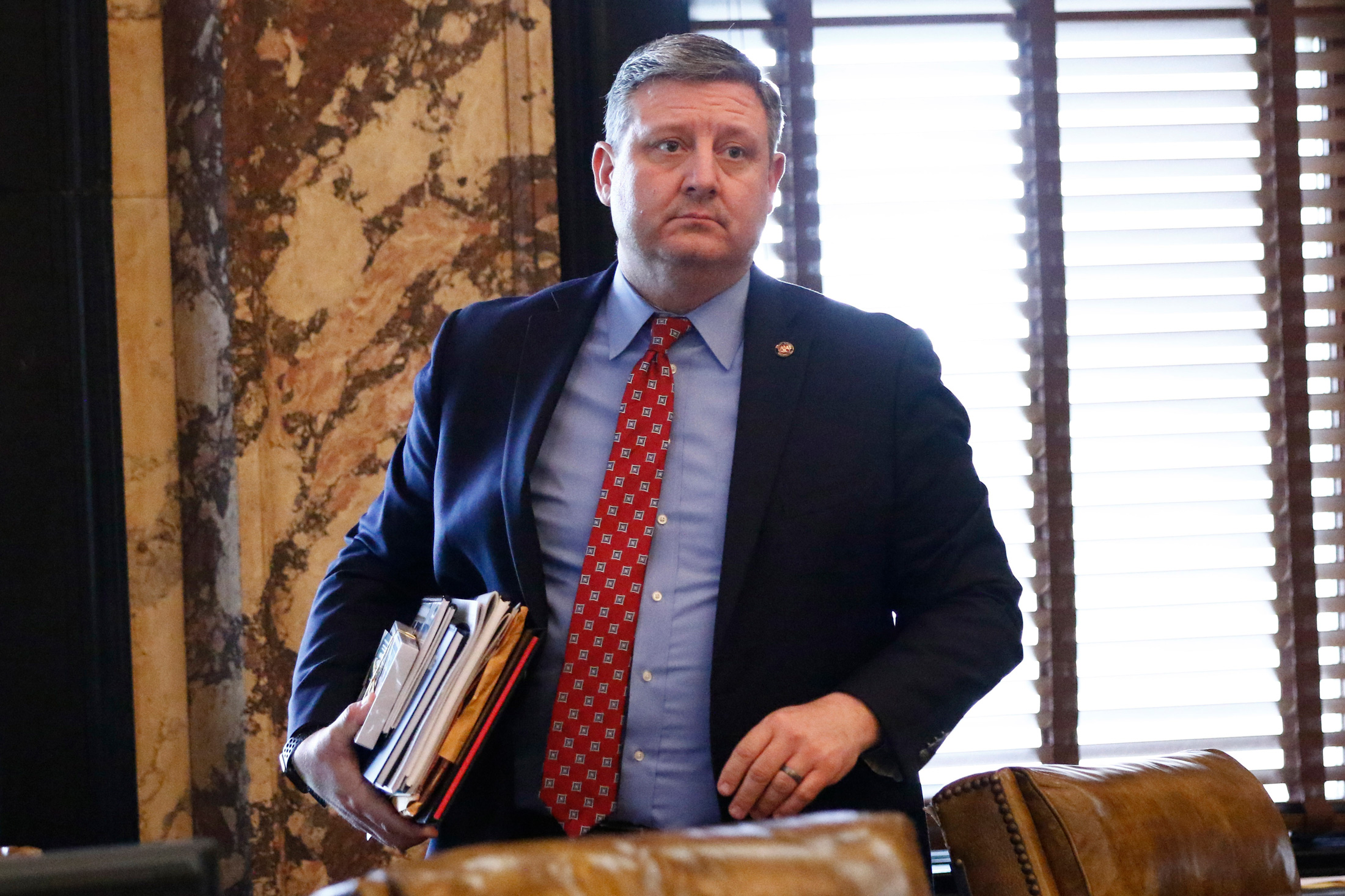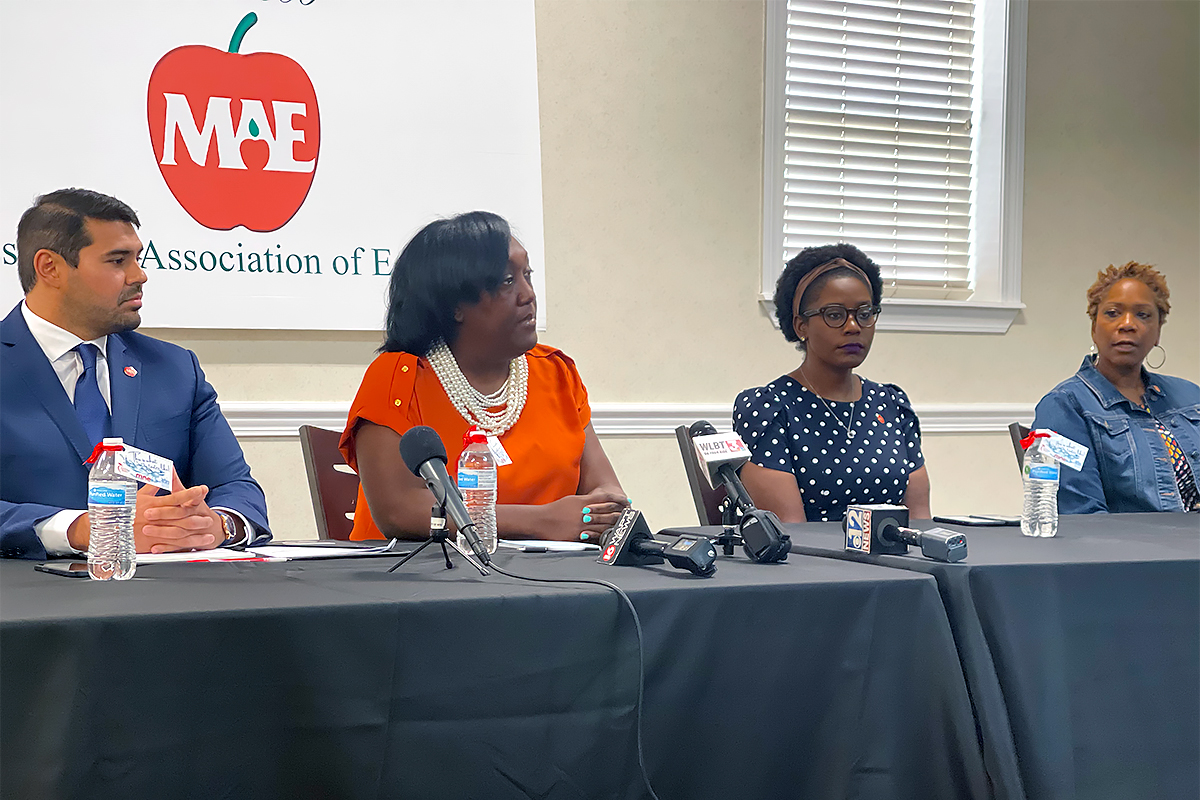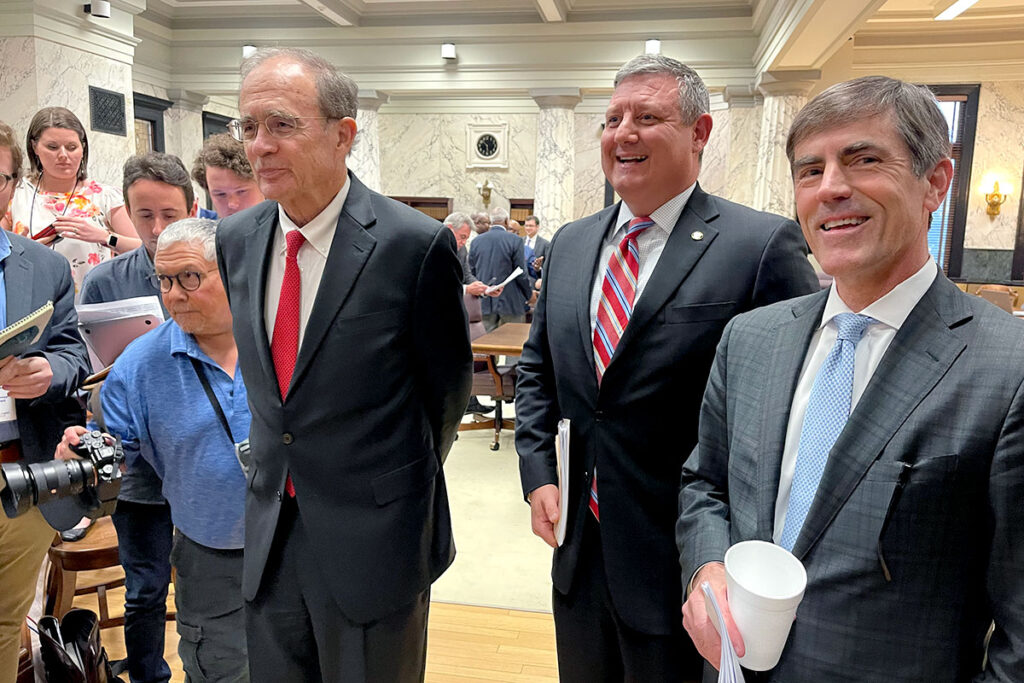Mississippi lawmakers will be able to say they “fully funded” public education while spending about $90 million less than what the current law calls for if a Senate proposal to change the formula for calculating what “full funding” means becomes law.
The Legislature created the Mississippi Adequate Education Program in 1997 with the stated goal of ensuring all Mississippi children would receive an “adequate” education whether they attended school in a low-income or high-income community. Since that time, the State has only met the law’s requirements for fully funding education twice, most recently in 2008.
In its education appropriations bill, the Senate included enough funds to meet the new, lower threshold for “fully funding” public education that House Bill 1369 creates. Even so, because the old funding targets are not being met, the State would still wind up spending about $181 million more on education than it currently does over the next year if the bill becomes law. If lawmakers were to fully fund MAEP under the current law, they would need to spend $261 million more than they currently do.
Under MAEP, the State pays for the difference between what a local community is able to contribute and the cost per student multiplied by the district’s average daily attendance. MAEP requires a recalculation of the cost per student, or the base student cost, every four years. In the interim years, the state uses a formula based on annual inflation to determine increases in funding, but the new bill would significantly revise that approach by using a 20-year average instead of annual inflation figures.
The Mississippi Senate Education Committee inserted the changes to the MAEP formula into House Bill 1369 with an amendment on Tuesday, and the full Senate passed it by a 52-0 vote later that day. The Senate also passed the increased funding bill unanimously the same day. Both bills return to the House for concurrence or possible negotiations.
Senate Changes Inflation Calculations
The current MAEP formula determines how much a school district receives by multiplying average daily attendance in the district by the base student cost with the local contribution removed. The Parents’ Campaign’s website describes the base student cost as “the amount that is required to provide each student an adequate education in a Mississippi school.”
Under the current formula, each local school district pays for 27% of the base student cost using local tax money.
The current formula requires a recalculation of the base student cost every four years, with the next recalculation set for 2027. In the non-calculation year, 40% of the base student cost from the previous year is multiplied by the annual rate of inflation. Under the new plan, the formula would instead multiply 25% of the base student cost from the previous year by the 20-year average annual rate of inflation. The local contribution would also increase to cover 29.5% of the base student cost instead of the current 27%.
“Forty percent is really not an accurate indicator of what the (impact of) inflation is on the actual expenses of a school district,” Mississippi Sen. Dennis DeBar, R-Leakesville, said Tuesday on the Senate floor as he explained the changes to the formula. “Superintendents have indicated that really their only actual expenses that are subject to inflation is approximately 25, 20% of MAEP. Currently, it’s 40%, we’re going to reduce that to 25%.”

DeBar said this year’s inflation rate is 8%, but the average over the last 20 years is 2.5%, and that is the number that would be used to multiply by 25% of the base student cost if the newly proposed formula were in place this year.
A document committee leaders provided to the press after the Monday meeting shows that the base student cost statewide for the present fiscal year is $6,532.20 per student under the current formula. Under the new formula in fiscal year 2024, the committee expects the base student cost would rise to $7,124.51.
“When we started this term, we had a goal to conclude it by significantly raising teacher pay and fully funding MAEP. The technical amendments to the formula allow us to update its elements while leaving it intact,” DeBar said in a statement Lt. Gov. Delbert Hosemann’s office released on Monday. “We are very proud of the Senate’s leadership, we are thankful for the input so far from members of the education community, and we look forward to working with the House to move legislation providing full funding to the governor’s desk.”
While fielding questions from the press after the Senate Education and Appropriations committees met, Hosemann said that, by calculating inflation on 40% of expenses instead of 25%, “we were off, and we’ve been off for 20 years.”
“So when you adjusted that back and started doing the regular average inflation, that allowed it to come to $181 million,” he explained. “We basically had a formula that was out-of-date with what the expenses were. Most of the expenses for education quite clearly are in salaries—in teachers’ salaries—as should be.” Salaries are not part of the inflation calculation.
DeBarr told the Mississippi Free Press that, with this new formula, every school district would get increased funding.
“Well, as we go forward, this provides more predictability in the process. So, assuming everything that stays the same, we’re looking at (an additional) $24 million roughly next year to fully fund it,” he said.
‘I’m Wondering Why The Goalposts Have Moved’
Mississippi Rep. Jansen Owen, R-Poplarville, told the Mississippi Free Press that he feels the move could backfire on proponents of public education.
“I appreciate their efforts to put a lot of additional money in the MAEP. I just want to make sure we’re not setting us too far back to the point to where individuals will be able to take these major changes to MAEP, and use it against potentially adding more funding to education in the future,” he said. “I’m still looking at the tweaks they made to the formula.”

He said the proposal “gives him pause.” Under current law, the State would need to spend about $261 million more than it does now to say it “fully funded” education. Under the new proposal, he said, “fully funding” MAEP would require the State to spend just $181 million more than it currently does.
“So that gives me immediate hesitancy. … I’m wondering why the goalposts have been moved to where fully funding is less now than it was yesterday.”
‘Very Positive For Public Schools’
Mississippi Parents’ Campaign Executive Director Nancy Loome told the Mississippi Free Press on March 7 that her organization is pleased with the direction the Senate is headed.
“Well, what I would say is that a $181-million increase is very positive for public schools,” she said. “I do understand that legislators have some concerns about the sustainability of the formula moving forward, and these changes will make some fairly minor adjustments that make them feel better about the potential growth of the formula.”
“If that’s what it takes to get school districts a fully funded formula this year and in the years to come, that’s what is important. We believe that it is really important to get the Legislature back in the habit of fully funding public schools. That’s a real win for public schools.”

In a statement to the Mississippi Free Press on Monday, Mississippi Association of Educators President Erica Jones welcomed the move.
“We are happy that MAEP looks like it’s on track to be fully funded in the coming year. Not only that, we believe the formula changes will provide the ability for the program to be fully funded going forward—barring an unforeseen, significant economic recession,” she said.
“We are grateful to the senators who asked us questions, listened to the many MAE members who contacted them, and produced what we believe to be a workable plan that will be welcomed by educators and supporters of public education across Mississippi,” she added. “We believe we may be witnessing a new day in public education funding—something we have hoped for a very, very long time. Stronger schools make a stronger Mississippi.”
Not The First Formula Change
The Legislature has changed the MAEP formula in the past as well.
“So the formula, when it was originally written, was designed to be recalculated every single year; it was an annual recalculation,” Nancy Loome told the Mississippi Free Press. The Legislature changed the formula under former Gov. Haley Barbour in the 2000s. Barbour had long been critical of funding for what he had called “government schools” when he served as chairman of the Republican National Committee.
“The Barbour administration was concerned that the formula was going to grow too quickly and they believed that going to a full recalculation only every fourth year and using an inflation component in the intervening years would help to slow the growth of the formula,” Loome said.

At the time of that first rewrite, Loome said, lawmakers estimated that school operations, which are subject to inflation, accounted for about 40% of the school budgets.
“In reality, overwhelmingly district budgets are made up of teacher salaries, so the operations portion of a school district budget is far less than 40%, and that is what the Senate is proposing to adjust to change that 40% of the budget to 25% of the budget, and to multiply that times the 20-year average inflation rate to get the increase in funding for those three intervening years when there’s not a full recalculation of the formula,” she explained.
Reeves Against ‘Funneling More Money to District Offices’
In a statement Tuesday, Gov. Tate Reeves expressed skepticism over the plan and a preference for another teacher-pay raise, saying the bill seemed “to have unanimous support amongst Democrats in the Senate and liberal activist groups.”
“Be very cautious of a last-minute change in funding formula that seems to have unanimous support amongst Democrats in Senate and liberal activist groups,” said Reeves, who during his time as lieutenant governor championed “school choice” legislation that moved public-education funds to charter schools and private-school voucher programs, as well as reward funds for teachers in higher-performing schools with less poverty-related challenges. “Very, very cautious. Instead of funneling more money to the district offices—where our kids won’t see it—why not another teacher pay raise? Put it in the classroom!”
Despite the governor’s claims, though, MAEP does fund school materials, such as textbooks, in addition to utilities costs, transportation, employee salaries and more. Local contributions pay for administrative and superintendent salaries.

For the changes to MAEP to become law, the Mississippi House would have to approve the Senate’s amendments and Reeves would have to sign it into law.
In 2015, Republicans in the state led a successful campaign against Initiative 42, which would have required the Legislature to fully fund MAEP under state law.
You can read more about MAEP at the Jackson Free press MAEP archive at Jacksonfreepress.com/maep.
This story has been updated to clarify Gov. Tate Reeves’ claims about MAEP and administrative spending.










